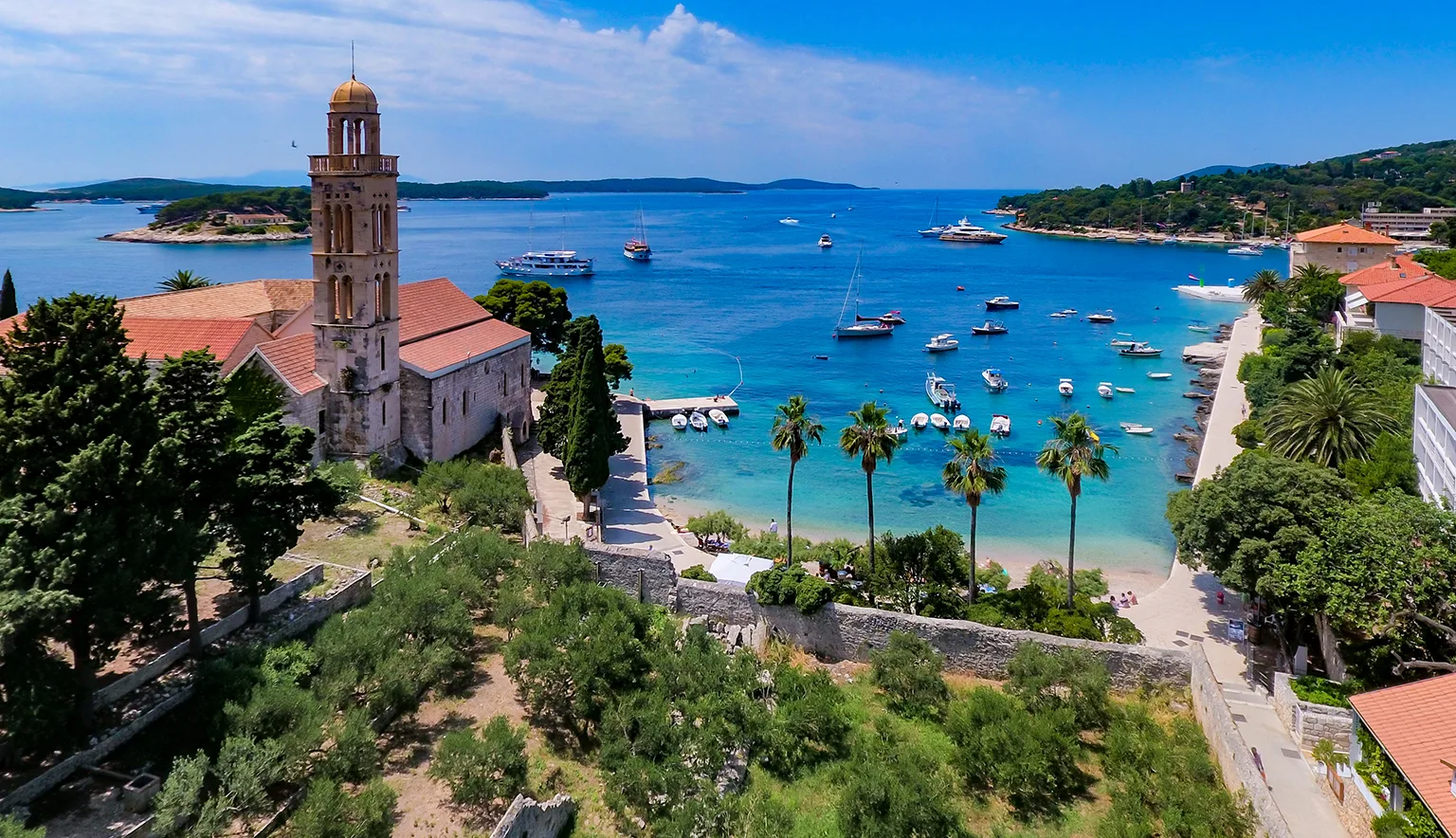Well-known for its natural, cultural, and historical significance, Hvar is home to no less than five UNESCO Intangible Cultural Heritage-listed traditions and practices.
Za Križen, or ‘Following the Cross’, is a profoundly religious celebration that showcases the island’s rich traditions and beliefs, attracting many participants and visitors during the Easter season. Dating back to the 16th century, the procession passes through Hvar’s main towns, led by a cross-bearer.
The island’s lace-making technique, meanwhile, is practised exclusively by the Benedictine sisters of Hvar Town that involves creating intricate lace from agave plant leaf fibres. A traditional craft that originated over 130 years ago, large pieces can take between five and six months to complete due to their unique designs.
Then there’s Hvar’s traditional construction technique, dry stone walling, which creates the island’s characteristic ‘stone lace’, contributing to its picturesque landscapes. This method is typically used to create pens for livestock and is an essential component of the island’s cultural identity.
More than just food, the Mediterranean diet of Hvar also encompasses a way of life and rich cultural traditions. Dating back centuries, fresh seafood, fruit, and vegetables, alongside carefully produced wines, play an important part in the Dalmatian diet.
Last but not least, traditional klapa singing resonates deeply with the island’s spirit and is typically performed a cappella. Expressing the cultural identity of the entire Dalmatian region, klapa songs can be distinguished by their musical and lyrical content, whilst singers perform standing in a tight semicircle.
In addition, Stari Grad Plain, also known as Ager, is the island’s only UNESCO World Heritage Site. The unique plain has remained largely untouched since 384 BCE when the island was colonised by ancient Greece. An archaic agricultural landscape that narrates Hvar’s storied past, the plain features ancient stone walls and a geometrical system of land division, thought to be tangible evidence of Greek influence.























